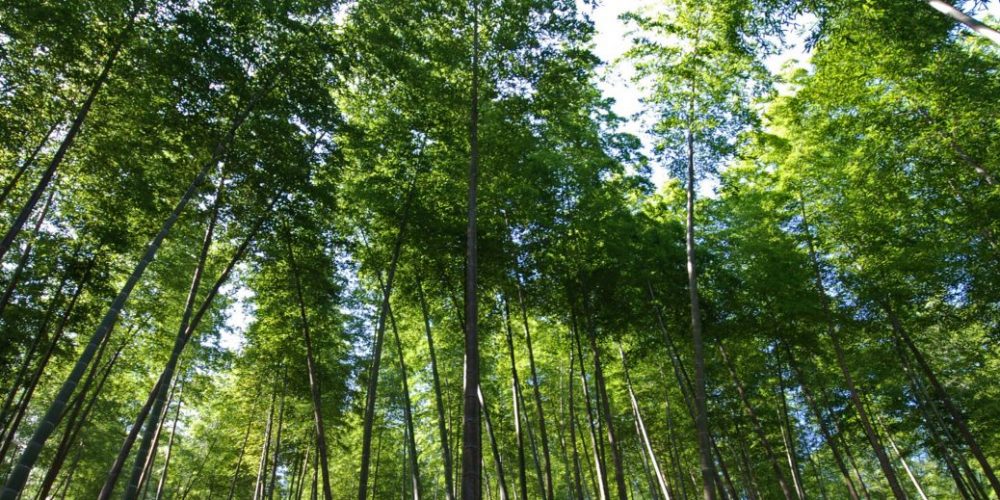Addis Ababa June 7/2019 In spite of owning huge hectares of Bamboo, Ethiopia has not benefited from its potentials, experts in the sector say.
Despite its abundant bamboo resources the country, has not been able to effectively utilize its bamboo natural endowments.
Ethiopia owns 67 percent of bamboo groves in Sub-Sahara Africa with a potential of commercially untapped 1 million hectares of land. Two of the bamboo varieties are indigenous to Ethiopia and are highly demanded at world markets.

Bamboo’s Economic Significance
According to a nationwide research conducted by the Ethiopian Forest and Climate Change Commission, bamboo, also known as the “green gold of Ethiopia” contributes more than 56 million Birr to the country’s GDP engaging well over 750,000 farmers in the sector.
The International Network for Bamboo and Rattan (INBAR) witnessed that Ethiopia’s potential revenue and employment from bamboo is immense, which is potentially 3 million hectares of plantations, 5 billion dollars in revenue and 1.3 million jobs.
Speaking to ENA on the importance of bamboo globally and for Ethiopia’s economic and social development, Ashebir Wondimu, Environment, Forest and Climate Change Commission Senior Expert and Bamboo Focal Person, said though Ethiopia is endowed with huge bamboo resource but still far less exploited.
“The country has huge potentials which has so far not tapped and has not been used extensively for the development of the country and is closely working with ANBAR, a global bamboo technology capacity building organization in which Ethiopia is also a member,” he noted.
Bamboo for Import Substitution
Bamboo could play an important role not only in the overall economic development of the country but could also contribute to sustainable land management and livelihood improvement for those engaged in the sector.
Researched indicated that bamboo tree matures in 3 years of plantation while lumber tree can take up to 30 years to mature. It is a substitute for lumber in pulp industry, furniture and for import substitution in paper industries.
Alemayhu Birru, Communications Director at the Ministry of Agriculture, confirms that bamboo could immensely contribute to controlling soil and land degradation while also contributing to the replacement by timber.
In addition, bamboo converts 35 percent or more carbon dioxide into oxygen than a regular tree, he pointed out.
He stated that “the development of bamboo technology is a rather recent development in Ethiopia. Although the Ministry of Agriculture is engaged in preparing nurseries and bamboo farms for soil and water conservation schemes in seven regional states of the country including Gambella, Amhara, Oromia, SNNPRS, Tigray, Benishangul Gumuz and parts of Afar.”
Modernizing Bamboo Technology
Traditional skills in bamboo production are mostly restricted to utilizing the plant for house construction, fencing and building traditional household grain silos.
Aiming at modernizing the sector, The Federal Micro and Small Enterprise Development Agency (FEMSEDA) in cooperation with INBAR (International Bamboo and Rattan Organization) has been training individuals who have been working on traditional bamboo furniture.
FEMSEDA Communication Director, Ashenafi Melese, said the objective of the training is to renovate and enable technological transfer of traditional production to modern industry.
“The trainees come from different parts of the country and we train those who come from all regions from TVET and micro and small scale enterprises, We train them on modern technology concerning bamboo right from how the seedlings are planted up to producing various commodities from bamboo,” he said.
Quite a few factories engaged in industrial production of bamboo products are gradually developing in the country.
S.A Bamboo Works plc in at Burayou town produces bamboo floor tiles, carpets and curtains, various 8 types of furniture and sticks for incense producers. The factory has provided employment opportunities for young women after training them on various skills related to bamboo technology.
Bamboo National Strategy
As part of the national effort to enhance the development of bamboo technology in Ethiopia, recently Environment, Forest and Climate Change Commission came up with a new strategic document entitled “ Ethiopian Bamboo Development Strategy” that will be operational from 2019 –2030 for a period of ten years.
Dr. Ayele Hegena, Director General for Policy and Strategy at EFCCC, noted that the strategy is already in implementation since this year.
He expounded that “The strategy is developed for ten years and is already in implementation starting this year and goes up to 2030. It is developed with due consideration of involving major stakeholder in bamboo technology and is aligned with the SDG Ethiopia is implementing.”
According to a data ENA has received from the Ethiopian Investment Commission, out of 16 investment ventures licensed by the Commission only 1 has been fully operational while a number of them are yet engaged in bamboo plantation development.
However, 4 local developers are already engaged in producing some types of bamboo products at factory level.
Ethiopia hosts the East African regional office of International Bamboo and Rattan (INBAR), but bamboo technology is yet developed in Ethiopia.
Over the next 10 years, the country is expected to generate foreign currency from the sector. Two Chinese companies have concluded a deal with Ethiopian government to invest a total of $2 billion to process Ethiopia’s bamboo and produce paper products for both local and export market.
